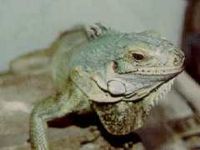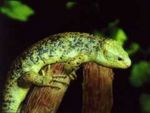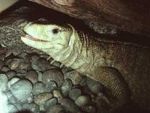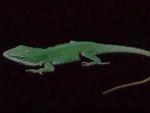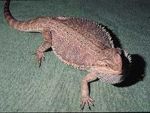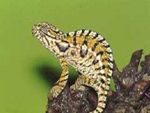Lizard Taxonomy and Identification
| This article is still under construction. |
|
|
Introduction
With their growth in popularity as domestics pets, lizards are being presented to veterinary surgeons in increasing numbers. They are a diverse group of animals and can often pose problems for vets who have seldom, or perhaps never, handled them.
Taxonomy
Reptiles are ectothermic vertebrates with scales or plates, right and left aortic arches, a partially divided heart and a single occipital condyle. Lizards are members of the reptilian order Squamata.
Common species
There are 22 families of lizards, comprising approximately 3,750 species. About 20 species are commonly kept in captivity. The green iguana is the most popular. There are two poisonous species, the Gila monster and the Mexican beaded lizard, although you are unlikely to see them often in practice.
Identification
Given the range of species, identification can be difficult. However, the most common lizards you are likely to see in practice can be viewed here.
Green Iguana
Iguana iguana. The green iguana is the most common pet lizard and is found free-ranging in the tropical and subtropical regions of Mexico to Southern Brazil. This herbivorous lizard often suffers from metabolic bone disease in captivity due to inadequate husbandry. A suitable temperature range is 29-39°C.
Skink
Corucia zebrata. The prehensile-tailed skink is a very large skink. They reach a maximum length of 80cm, half of which is composed of a fully prehensile tail. The dorsal surface has a grey/green background and is speckled black. The chin is yellow and the underside pale. They have become popular terrarium animals due to their easy husbandry, large size and unusual appearance.
Monitor Lizard
Varanus spp. Monitor lizards are mostly large powerful predators or carrion eaters. The family includes the savannah monitor (varanus exanthematicus), Nile monitor (varanus niloticus) and the Komodo dragon (varanus komodoensis).
Green Anole
Anolis carolinensis. Green anoles are diurnal and semi-arboreal. They are slender lizards with long tails (fragile and readily lost) and a pointed head. They will grow from hatchling (5 to 6cm) to small adult size in 6 to 8 months and, if maintained properly, have a typical lifespan of 3 to 6 years.
Bearded Dragon
Pogona vitticeps. This lizard is diurnal. Adults grow to 50 cm and have a blunt arrow-shaped head. Scales along the skin of the throat and the side of the head and body have specialized into spiny points.
Chameleon
Chamaeleo spp. Chameleons are considered among the more delicate of lizards. Anatomical differences from other lizards may include astonishingly long tongues, ability for colour change, oppositely opposable digits and prehensile tails. They are generally viviparous.
